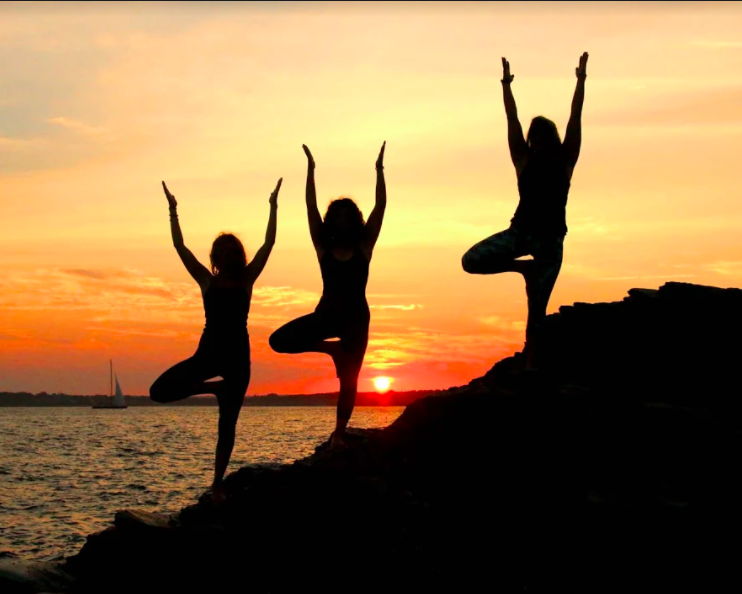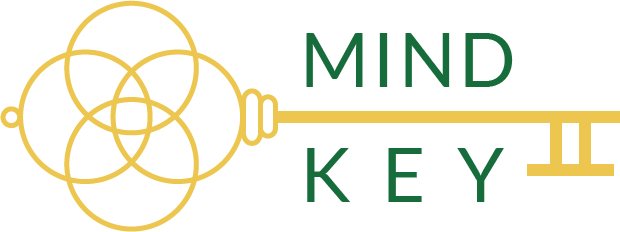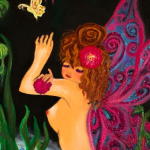
Identifying and Understanding the Ego Through Yoga
The ego can find balance with a simple and consistent yoga practice. The ego is not altogether “bad,” and in fact, we better understand ourselves when the ego has healthy balance. Here are some tips for how to use Yoga in your daily quest to understand your ego.
Consistent yoga practice and a stronger self
Albert Einstein believed that our personal experiences lead us to feel separate from the rest of the universe (consciousness). He says this delusion creates a self-imposed prison, restricting us from our personal desires and affections. We must widen our circle of understanding and compassion to embrace all of nature.
Although the ego was initially created to keep us protected and safe, we often outgrow those beliefs and paradigms long before we release them from our daily life experiences.
“Much of the ego is based on fear and we use our strategic minds to plan and plot in various ways, to try to keep us from getting hurt in this world,” Yoga teacher, healer, and artist, Kerstin Zettmar writes. “We all wish to be safe—nothing wrong with that—but the ego believes that we are all separate and need to protect, and serve, mostly ourselves. When taken too far, this leads to competition, conflict, and war. This keeps us caught up in an illusion.”
“When I think of the ego, I think of my own sense of personal identity,” Emily Moyer, co-owner and director of Newport Community Yoga, shared. “As life is constantly changing and in motion, so are the roles. Who am I underneath all of that? Yoga connects me to the true self, my own inner essence that remains unchanged by the human experience.”
Kerstin believes there are many different ways to connect to the underlying reality of consciousness. Meditation and yoga are among the paths proven to do just that. Here are a few tips to connect and disengage from ego.
1. Get outside your comfort zone
The online yoga website, Do You Yoga, warns that ego is simply a collection of thoughts that you identify with. Whether yoga is something that is a daily practice, or something you’ve never tried before, getting physical on the mat can be a great way to expand your experiences and get outside your comfort zone.
In their article, How to let go of your ego, teacher, coach and Do You Yoga founder, Amarjit Singh said, “We tend to draw boundaries on our experiences through our self-perception and identification. We judge ourselves in relation to experiences.”
Singh continues by saying common phrases such as, “I could never see myself doing that,” “that isn’t me,” or when identify with culture, groups, sexes, nationalities, etc. by saying things like, “my culture doesn’t do _______,” or “this is against the norms of _______,” block us from the full experience of living outside of the boundaries of the ego.
“A major step in the process of yoga is the understanding on an experiential level that you are not your mind,” Singh said. “Once the yogi experiences this, it makes it easier to let go of false identification with thoughts, and the ego, getting closer to experiencing the authentic self.”
A mantra such as, “I am open and available to all of life experiences,” could be a simple way to help you shed the trappings of an ego that no longer serves you, and attune to a more expansive vibration that will bring more life experiences you seek that may currently seem outside of your comfort zone.
2. Just breathe
“Very few people breathe fully in our hurried society,” Kerstin said. “As a yoga teacher, I have witnessed many students come to class feeling stressed and anxious and leave much calmer and more connected to themselves. The breathing exercises combined with the yoga poses help students create more inner space, giving them a sense of freedom.”
Kerstin had childhood asthma, which left her with a very narrow and constricted rib cage. However after taking just one yoga class a week for a year, she was able to expand her rib cage by two and a half inches.
“I noticed that this allowed me to breathe with more ease, which in turn quieted my mind, and eliminated many of my fears and anxieties,” Kerstin said.
Just breathing is one of the most powerful ways to let go—of toxins, energy and old patterns. It’s one of the most basic of human tools—and one that’s been used for centuries to help us calm down, get balanced and get better. Of course, yoga is all about the breath, and how that breath connects our mind to our body. Below, are a few other breathwork tips that can help you shed your ego and become more expansive.
3. Lion’s breath—exhale that which isn’t you
Emily shares a dream experience that taught her how to use lion’s breath, a popular and powerful yogic form of breathwork, to let go of elements of her ego that are no longer serving her.
“I once had a dream where I thought I died. I left my body and was brought to my spirit guide. I was very confused and explained that it was definitely not my time. I still had so much life I wanted to live! My guide reassured me I was only leaving my body to learn a lesson and I would be going back. I was asked by my spirit guide to expel into a little silver bowl everything that wasn’t me. In the dream, I began lion’s breath (eyes roll back, tongue sticks out, exaggerated exhale). All of this stuff was coming out of me—emotions, fears, attachments, feelings, plans, ideas, relationships, memories. I was feeling myself purging all of this until there was only one little part of me left—my connection to spirit. It was the part of me I could not expel or detach from. I could then return to my body, to my life, with a renewed sense of trust, peace and energy. I did not remember the dream in the morning until I found myself throwing up. The physical purging instantly brought back the memory of the dream, which brought a remembrance of my connection to radiant spirit. Remembering the truth of who I am and feeling the preciousness of this one life, I felt I could finally let go of some of the fears and insecurities that had been holding me back.”
4. The four-stroke breath to build intuition
This meditation, curated from Yoga Coaching, an Italian-based training discipline which curates tools from the ancient tradition of Kundalini Yoga for specific development goals, will help build intuition. Listen deeply afterward to see if you can hear your intuition and cut through confusion.
Mudra: place your hands together in prayer Mudra. Keep the index (Jupiter) finger extended as you interlock the other fingers to clasp your two hands together. Cross the thumbs.
Make your eyes nine-tenth closed.
Place the Mudra a little below your nose where you can look at the tips of your index fingers through the one-tenth opening of your eyes.
Breath: Inhale in four powerful strokes through the “O” mouth (1 stroke per second = 4 second inhale) and exhale in one powerful stroke through the nose (1 second).
Time: 16 minutes.
To finish: sit straight, inhale, hold your breath 20 seconds and stretch your arms out to the sides, palms facing upward. That will give you power to balance your central spinal column. Exhale. Inhale deep, hold your breath 20 seconds, and open up your fingers, making them like steel. Squeeze your entire energy and bring it to your arms. Exhale and relax.
The yoga-self connection
“So much of what I let bother me is the result of an over identification with the ego, thinking that circumstances and things outside of myself have control over who I am,” Emily writes. “When we identify with the ego, we feel threatened by constant change because we feel we are the ego. When changes occur, such as loss of a job or the end of a relationship, it feels like a part of us has died, and our very identity is affected. Yoga brings me back into connection with true source, my soul, the Divine. While practicing yoga, I feel my breath, listen to my body and connect to the life force moving within me. I come to a spacious and peaceful home within myself that is quiet, vast and still. It doesn’t happen in every moment of the practice—I have distracting thoughts, attachments and aversions that come and go—but the more I practice, the more worn the path back to that place becomes, and the easier it is to connect to off the mat.”
“It appears that when all the different parts of us work in union, in coherence, we can finally land within ourselves in a new way, regardless of what is going on in the outer world,” Kerstin said. “The deeper in we go, the more we dip beyond the strategic mind—the ego—and connect with our essence. It is from that place we can realize how connected we are to each other and everything in the Universe.”
The Chandogya Upanishads states: “In the Center of the body there is a shrine surrounded by a wall with 11 doors, hidden within the shrine, a lotus blossoms, and within this lotus blossom there is a tiny little room, and within the room, the Atman our true self sits.”
The Atman exists underneath the surface chatter of the mind and identification of the unstable and ever-changing ego.
“I get irked when I hear people say that their type of yoga, be it Power Yoga, Ashtanga yoga, Kundalini Yoga or any other form, is the only ‘True Yoga,’” Kerstin said. “I find that divisive, ego-based, and it reminds me too much of the suffering caused when different churches or religions fight and insist that their way is the only way.
“What is the right form of yoga? It is the type of yoga that works for you, wherever you happen to be at the time, physically, mentally, emotionally and spiritually. I am in favor of all of all yoga practices, if they help you become a more peaceful, and loving person with greater faith in the Universe, and an understanding that you are part of a eternal World Wide Web, much greater than the internet.”



 Let go. Have a consistent yoga practice that benefits your ego. Image by Meredith Brower.
Let go. Have a consistent yoga practice that benefits your ego. Image by Meredith Brower.  Let go. Have a consistent yoga practice that benefits your ego. Image by Meredith Brower.
Let go. Have a consistent yoga practice that benefits your ego. Image by Meredith Brower.